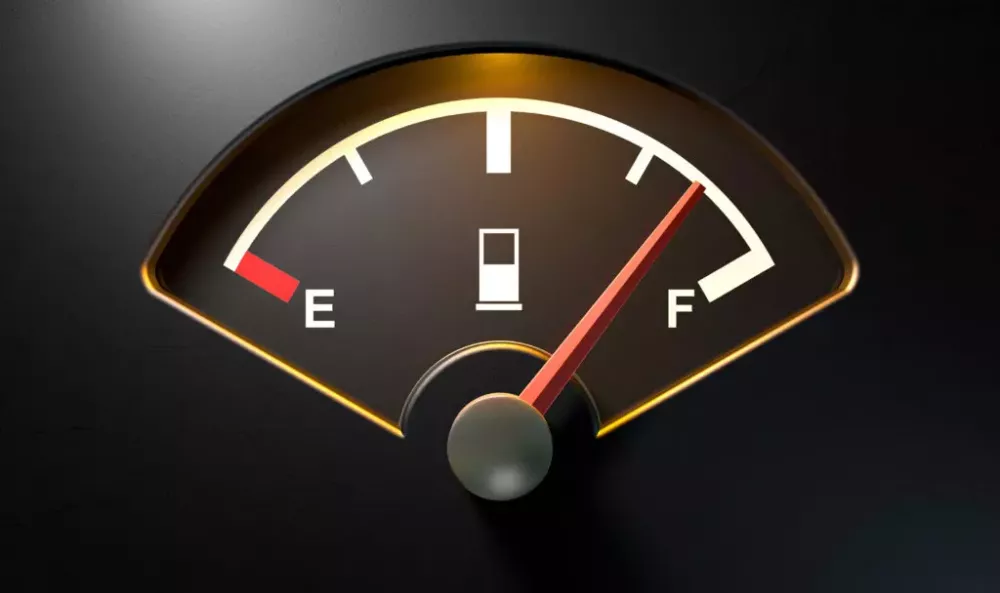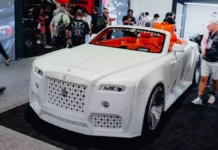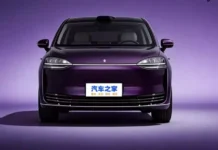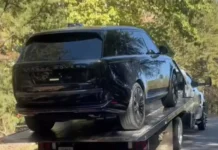## Running on Empty: How Far Can Your Car Go When the Fuel Light Comes On?
Whether you’re cruising on the highway or navigating busy city streets, there will be times when you see the fuel gauge needle hovering dangerously close to the red line. The fuel warning light, often accompanied by a small fuel tank icon and a bright red mark, illuminates when your fuel level reaches a critical low. Contrary to what novice drivers may think, this doesn’t mean your car is about to stall.

Fuel gauge needle reaching the E or red mark indicates a low fuel level. The F mark indicates a full tank.
In reality, when the warning light comes on, your car can still travel between 30 to 80 kilometers, depending on fuel consumption and vehicle type. This reserve range is intentionally set by automakers to allow drivers to reach the nearest gas station. When the needle hits the E or red mark, it means your tank has approximately 10 to 15% of its total fuel capacity remaining.
Modern vehicles are even more helpful, as they can predict and display the exact distance you can still travel based on your car’s average fuel consumption.
What Are the Risks of Running Out of Fuel?
Letting your car run out of gas is more than just an inconvenience—it can have detrimental effects on your vehicle. Here are some of the consequences you may face if you regularly drive with a low fuel level or allow your tank to run empty:
– The fuel pump needs to be cooled by the fuel itself under normal conditions. A fuel pump acts like an electric motor, transferring fuel from the tank to the engine. As the fuel passes through the pump, it cools the copper windings. When you drive with a near-empty tank, air replaces the fuel in the pump, and it has to cool the windings instead. This leads to inefficient heat dissipation, which can cause the electric motor to overheat and fail.
Running at low fuel levels can cause the pump to suck up debris or air, leading to overheating and damage.
– The fuel injection system is also susceptible to damage from debris. In theory, this system transports fuel from the tank to the combustion chamber. However, driving with a near-empty tank can cause the pump to draw debris from the bottom of the tank and into the fuel injection system, clogging the fuel injectors. As a result, fuel may not reach the combustion chamber, preventing the engine from starting.
– Frequent low fuel levels can put strain on the fuel supply system. Over time, this can affect components such as the fuel filter, fuel injectors, and combustion chamber.
– Running out of gas can compromise your safety on the road. A stalled vehicle, especially on a highway or steep incline, poses a danger to you and other motorists.
What to Do When the Low Fuel Light Comes On
– Stay calm and use your navigation system or a map to locate the nearest gas station. Refuel as soon as possible.
– Estimate the distance to the nearest gas station and adjust your driving habits and vehicle usage accordingly. If the distance is considerable or you’re facing heavy traffic, turn off non-essential energy-consuming devices like air conditioning, radio, and seat heaters. Practice fuel-efficient driving by maintaining a steady speed, avoiding sudden brakes, and minimizing rapid acceleration.
Should You Wait for the Low Fuel Light to Come On Before Refueling?
Don’t wait for the low fuel warning light to illuminate before refueling. Instead, develop the habit of refueling regularly and monitoring your fuel gauge before each journey. When the needle drops below the 1/4 mark, start looking for the nearest gas station and fill up your tank.
The low fuel warning light serves as a reminder that proper vehicle maintenance goes beyond safety—it also prolongs the lifespan of critical components like the fuel pump, engine, and fuel supply system.
With the advancements in GPS technology, fuel-finding apps, and modern fuel level indicators, there’s no excuse for running out of gas. Don’t let an empty tank ruin your trip—always be prepared and keep your tank topped up!










































